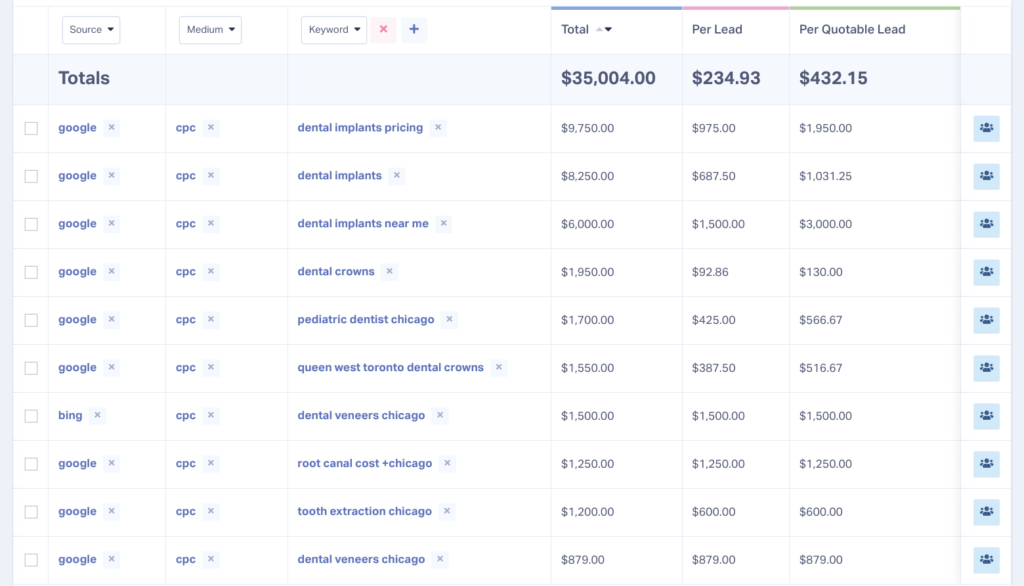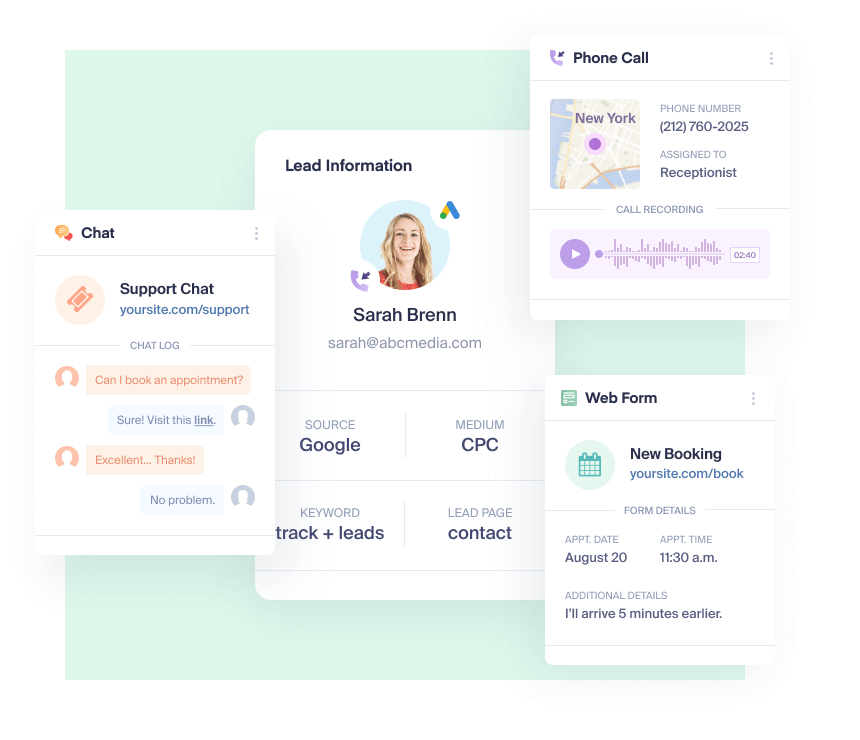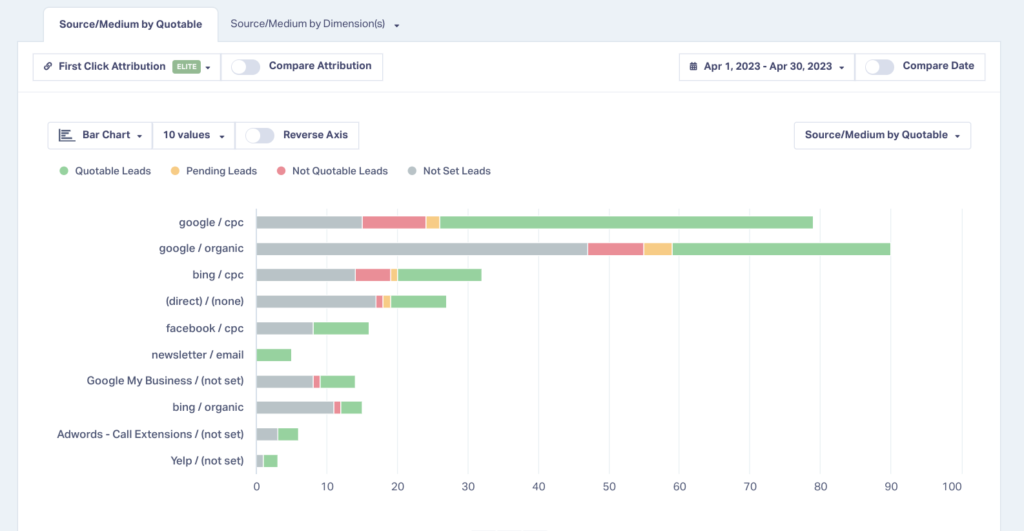
Your latest marketing report shows strong numbers. Traffic is up, social engagement is climbing, and your conversion rates look better than ever. Everything seems to be working perfectly.
Then comes the hard question from your client or CEO: "But how is this affecting our bottom line?"
Suddenly those impressive-looking metrics don't feel so solid. Because while you can show plenty of marketing activity, proving actual business impact is a different challenge entirely.
The good news? Measuring marketing effectiveness doesn't have to be this difficult. You just need to focus on the metrics that actually drive business growth—and ignore the ones that don't.
Read More: Path to $1M MRR – Agency Shifts from Vendor to Partner w/ Advanced Reporting
What Does Marketing Effectiveness Really Mean?
Marketing effectiveness measures how well your marketing activities drive qualified leads that convert into revenue. The key word here is "qualified"—because while any marketing can generate leads, effective marketing generates leads that:
- Have genuine buying intent
- Match your ideal customer profile
- Have the budget to purchase
- Are likely to become long-term customers
That might seem obvious, but surprisingly few of the most common marketing metrics can actually tell you how many qualified leads and future customers your campaigns generate.
Take conversion rate, for instance. A campaign driving 10,000 visitors with a 5% conversion rate sounds impressive. But what if half those conversions are spam? What if a quarter are existing customers looking for support? What if most of the rest aren't qualified to buy? Suddenly that seemingly strong performance becomes much less impressive.
The Problem with Traditional Marketing Metrics
Traditional marketing metrics only tell part of the story—and it’s not the part that clients and CEOs care about most. Consider the basic conversion rate formula: number of visitors divided by number of conversion actions. That's it. There's no insight into lead quality, sales potential, revenue impact, or true marketing ROI.
This limitation extends beyond just conversion rates. Many marketers rely heavily on surface-level metrics like page views, time on site, and social media engagement. While these numbers can indicate campaign performance, they rarely correlate directly with business growth.
The fundamental issue is that these metrics measure activity, not results. They might tell you if people are interacting with your marketing, but they can't tell you if those interactions are valuable. You can have millions of page views, thousands of downloads, and a 75% email open rate, but if you aren't driving quality leads that result in sales, none of it matters.
So how can you measure marketing effectiveness?
Step 1: Install Comprehensive Lead Tracking
Start by implementing tracking across all marketing channels and conversion points. A single script should capture every interaction, from first touch to final conversion.
Track every lead's:
- Marketing source
- Contact information
- Conversion type
- Conversation transcripts
- Quote value
- Sales status
Lead quality and value tracking forms the foundation of effective marketing measurement. While standard analytics can tell you how many leads you're getting, quality tracking tells you whether those leads are worth getting in the first place.
Step 2: Identify Lead Qualification Criteria
Raw lead numbers mean nothing without a clear definition of what makes a lead valuable to your business. This is where many marketers go wrong—they track conversions but have no way to separate good leads from bad ones.
Your qualification framework should clearly define what makes a lead worth pursuing. Consider factors like:
- Minimum budget requirements
- Acceptable purchase timelines
- Target geographic locations
- Industry and company size fits
- Product/service interest alignment
This framework does more than just help you count qualified leads. It lets you analyze which marketing channels consistently bring in leads that meet your criteria. A channel delivering 50 qualified leads is far more valuable than one bringing in 200 unqualified ones.
Step 3: Set Up Value-Based Lead Scoring
Once you have your qualification framework in place, the next step is to assign concrete values to different types of leads. This is essential for measuring true marketing ROI. For example:
In service businesses, lead values typically align with average job values:
- Basic service calls: $200-500
- System repairs: $1,000-3,000
- Full replacements: $5,000-15,000
Medical practices might score leads based on typical treatment values:
- New patient exam: $300
- Cosmetic procedure: $2,500
- Major treatment: $5,000+
The key is having a consistent system. When you know that leads from one ad group typically close at $50,000 while those from another ad group average $5,000, you can better evaluate which marketing channels deliver the most value—not just the most leads.
Step 4: Create Revenue-Focused Reports
With lead tracking, qualification, and scoring in place, you can finally create reports that prove marketing's real impact on revenue. Focus on metrics that directly connect to business growth:
Qualified Leads by Source
Stop evaluating your marketing sources based on numbers that include junk conversions. Find out which channels bring in leads that match your ideal customer profile. For instance, a law firm might find that while their Google Ads and directory listings both generate about 100 leads per month, 80% of the Google Ads leads are legitimate potential clients while 70% of directory leads are either solicitors or people looking for free advice. Understanding this qualification rate by source helps you invest in channels that bring quality, not just quantity.
Lead Value by Campaign
Understand the potential revenue impact of your marketing efforts by tracking the total and average value of leads from each channel. A roofing contractor might find that, while Google Ads brings in more total leads, Facebook campaigns specifically targeting storm-damaged neighborhoods deliver higher average job values.

Cost Per Qualified Lead
Calculate how much you're really spending to acquire valuable leads, not just the cost of any conversion. An attorney might discover they're spending $50 per lead on broad match keywords but $200 per qualified lead once spam and irrelevant inquiries are filtered out.
Revenue Attribution
Connect actual sales back to the marketing efforts that generated them, showing true ROI for each channel and campaign. This is especially valuable for businesses with longer sales cycles, like senior living facilities, where it might take months for a lead to convert.
Stop Guessing, Start Measuring
The difference between successful marketing and wasted budget often comes down to measurement. When you track the right metrics, you can prove marketing ROI, optimize spending, and drive real business growth.
For agencies and marketers managing lead generation campaigns, proper measurement isn't just about proving value to clients—it's about delivering better results through data-driven optimization.
See How WhatConverts Automatically Tracks, Manages and Reports on Your Leads
Get a FREE presentation of WhatConverts
One of our marketing experts will give you a full presentation of how WhatConverts can help you grow your business.
Schedule a Demo
Grow your business with WhatConverts







